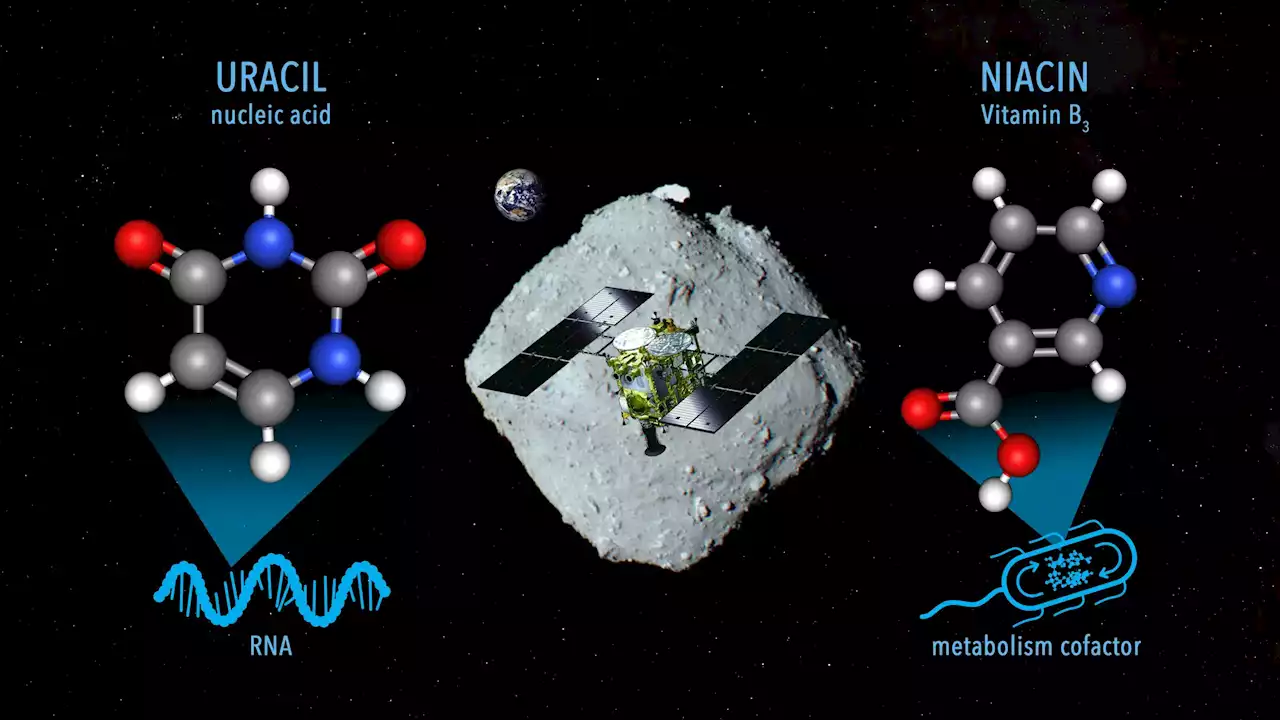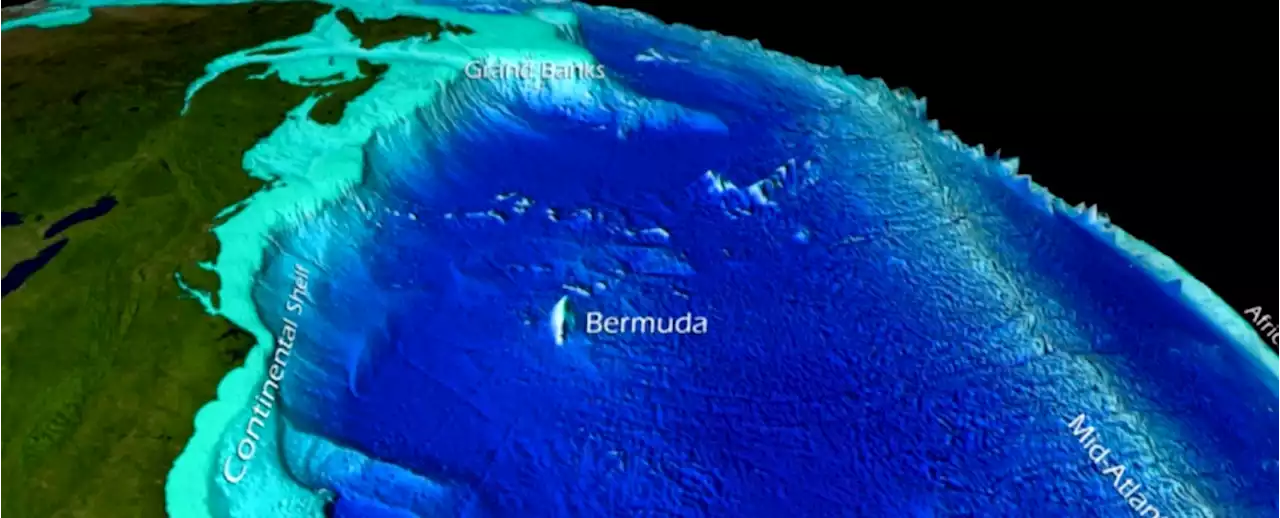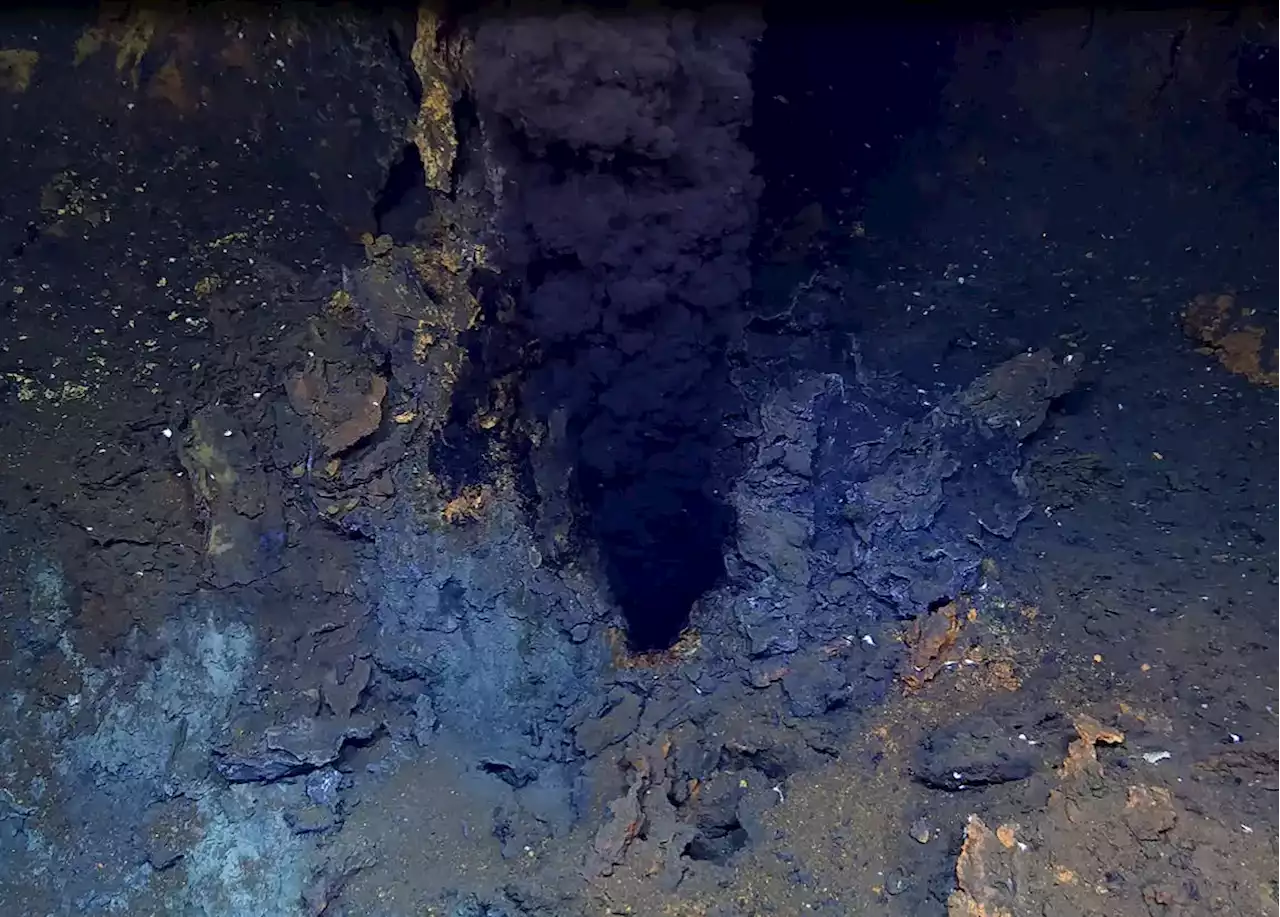A sample extracted from an asteroid far from Earth has confirmed that RNA nucleobases can be found in space rocks.
high-resolution mass spectrometry. This technique, when employed on the Murchison meteorite that fell to Earth in 1969, yielded all five canonical nucleobases.
The range of biomolecules found in Ryugu was smaller, but still significant, the researchers believe. "We found uracil in the samples in small amounts, in the range of 6–32 parts per billion , while vitamin B3 was more abundant, in the range of 49–99 ppb,"."Other biological molecules were found in the sample as well, including a selection of amino acids, amines and carboxylic acids, which are found in proteins and metabolism, respectively.
As to how they got on the asteroids, scientists believe that compounds containing nitrogen may have formed from simpler molecules, including formaldehyde, ammonia, and hydrogen cyanide. These have not been found in the Ryugu samples, but they were likely present if, early in its history, the asteroid or its parent body had been a comet, coated in ices rich in these molecules.
Canada Latest News, Canada Headlines
Similar News:You can also read news stories similar to this one that we have collected from other news sources.
 Component of RNA Found in Asteroid Ryugu SamplesSamples from the asteroid Ryugu collected by the Hayabusa2 mission contain nitrogenous organic compounds, including the nucleobase uracil, which is a part of RNA. Researchers have analyzed samples of asteroid Ryugu collected by the Japanese Space Agency’s Hayabusa2 spacecraft and found uracil—one
Component of RNA Found in Asteroid Ryugu SamplesSamples from the asteroid Ryugu collected by the Hayabusa2 mission contain nitrogenous organic compounds, including the nucleobase uracil, which is a part of RNA. Researchers have analyzed samples of asteroid Ryugu collected by the Japanese Space Agency’s Hayabusa2 spacecraft and found uracil—one
Read more »
 We Found the Building Blocks of Life Hiding in Asteroid DustPristine rock samples taken from asteroid Ryugu are home to uracil, a critical component of RNA.
We Found the Building Blocks of Life Hiding in Asteroid DustPristine rock samples taken from asteroid Ryugu are home to uracil, a critical component of RNA.
Read more »
 Scientists Discover That This Sport Can Train the Brain, May Help Fight Cognitive DeclineAccording to recent research from McMaster University, orienteering — a sport that combines athleticism, navigational skills, and memory — may serve as an effective intervention or preventive measure against cognitive decline related to dementia. According to researchers, the integration of physi
Scientists Discover That This Sport Can Train the Brain, May Help Fight Cognitive DeclineAccording to recent research from McMaster University, orienteering — a sport that combines athleticism, navigational skills, and memory — may serve as an effective intervention or preventive measure against cognitive decline related to dementia. According to researchers, the integration of physi
Read more »
 Scientists Discover Intense Heatwaves Lurking at The Bottom of The OceanIn 2013, a monstrous marine heatwave known as 'The Blob' developed off the coast of Alaska and soon stretched as far south as Mexico along the Pacific coast of North America.
Scientists Discover Intense Heatwaves Lurking at The Bottom of The OceanIn 2013, a monstrous marine heatwave known as 'The Blob' developed off the coast of Alaska and soon stretched as far south as Mexico along the Pacific coast of North America.
Read more »
 Surviving the Extreme: Scientists Discover Life in the Smoke of Underwater VolcanoesIn the depths of the ocean, along tectonic plate boundaries, hydrothermal vents emit hot fluids. These fluids lack oxygen and are rich in metals like iron, manganese, and copper, as well as potentially carrying sulfides, methane, and hydrogen. As the hot water interacts with the cold, oxygen-rich se
Surviving the Extreme: Scientists Discover Life in the Smoke of Underwater VolcanoesIn the depths of the ocean, along tectonic plate boundaries, hydrothermal vents emit hot fluids. These fluids lack oxygen and are rich in metals like iron, manganese, and copper, as well as potentially carrying sulfides, methane, and hydrogen. As the hot water interacts with the cold, oxygen-rich se
Read more »
 Scientists discover clues pointing to mysterious undersea civilizationA new study by the University of Bradford demonstrates that magnetic fields may hold the key to comprehending buried civilizations. Find out more at 🚀 engineering interestingengineering
Scientists discover clues pointing to mysterious undersea civilizationA new study by the University of Bradford demonstrates that magnetic fields may hold the key to comprehending buried civilizations. Find out more at 🚀 engineering interestingengineering
Read more »
